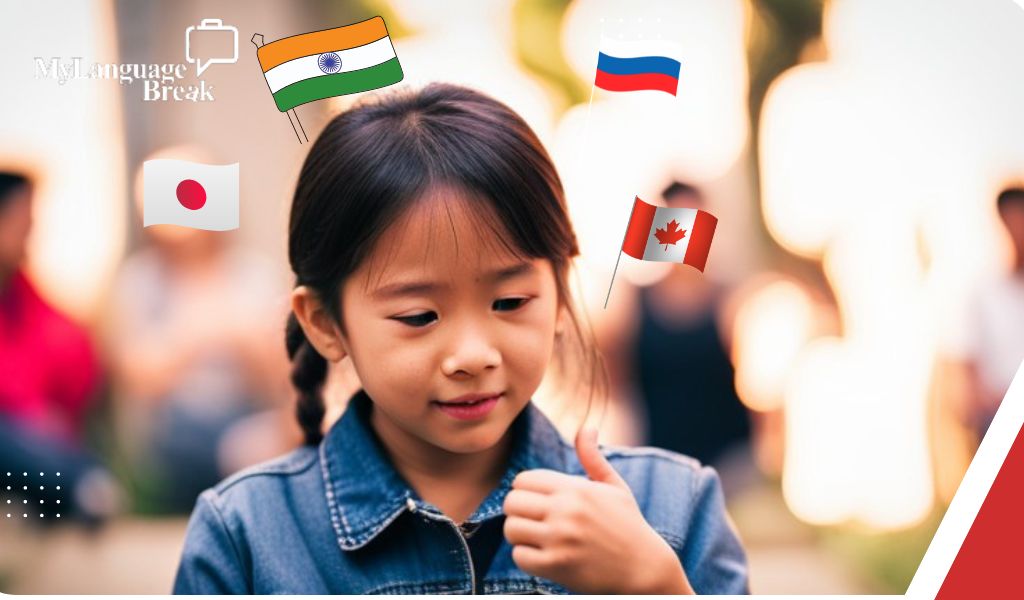Learning a language can be a daunting task, but learning two languages at once is an even bigger challenge. For those who are ambitious and have the time and energy to devote to studying, it is possible to learn Spanish and Russian simultaneously. It does require extra dedication to stay organized, but with the right strategy, it is possible for anyone to learn both languages.
Can You Learn Two Languages At The Same Time?
Learning two languages at the same time might seem like an overwhelming task, but it can actually be even easier than learning one language alone. With some planning and dedication, it is possible for you to learn Spanish and Russian simultaneously without sacrificing fluency in either language.
Having a plan of attack is crucial when attempting to learn two languages at once. When mapping out your course of study, decide how much time you will devote to each language each week, as well as what style of learning works best for you. This could mean setting aside specific days where you focus on only one language or alternating between them throughout the day so that both receive equal attention. Additionally, studying with a partner or in small groups can help keep both languages fresh in your mind and make the process more engaging for everyone involved.

Finally, don’t forget to have fun learning!
Advantages of Learning Two Languages
Learning two languages has many advantages for those who choose to take on the challenge. Being bilingual or multilingual can open doors to a variety of opportunities, from business and travel to social and educational advancements. Learning two languages can also provide individuals with increased mental agility, better problem-solving skills, and improved cultural understanding.
The ability to speak multiple languages is highly prized in today’s global society. Speaking two languages means that you are able to communicate with people from different cultures, understand their perspectives, and make meaningful connections with them. Furthermore, speaking two languages opens the door to more job opportunities as employers search for bilingual employees who can help bridge communication gaps between foreign clients or partners. Additionally, learning another language helps strengthen existing language skills while providing a greater appreciation of one’s native language.
Tips for Learning Two Languages at the Same Time
Source: @5minutelanguage – How to Learn Two Languages at the Same Time | 5-Minute Language
Are you interested in learning both Spanish and Russian? While it may seem daunting, it is possible to learn two languages at the same time. Here are helpful tips that will help you on your journey to becoming bilingual.
First, make sure to set realistic goals and break them down into smaller manageable tasks. Set aside a specific amount of time each day dedicated to learning both languages.
Next, find yourself some quality resources, such as textbooks, online courses, and native speakers. Immersing yourself in both languages by listening to music, watching movies, or reading books in both will help you pick up on certain nuances faster.
Additionally, focus on one language at a time and alternate between them regularly.
Lastly, don’t be afraid to make mistakes; allow yourself to learn from your errors and move forward with more confidence! With these tips in mind and lots of practice, you’ll soon be able to master two languages at once!
Make One Language Your Primary Focus
Learning multiple languages can be a daunting task, especially when attempting to juggle two or more at the same time. While it is certainly possible to learn Spanish and Russian concurrently, for language learners who are serious about mastering each one separately, it may be best to focus on one language before taking on the other.
By making one language your primary focus, you’ll be able to dedicate ample amounts of time and effort into understanding its nuances and intricacies better than if you were trying to learn both at once. This will enable you to become more proficient in that language by paying close attention to grammar rules, pronunciation and building up an extensive vocabulary bank. You could even consider immersing yourself in the culture of that country so as to gain a deeper understanding of how the language works in everyday life.
Is Russian harder to learn than Spanish?
Is Russian harder to learn than Spanish? The debate is ongoing, with many linguists and polyglots weighing in. For those interested in learning a foreign language, understanding the distinct differences between these two can help inform decisions about which one to tackle first.
Russian is considered one of the most difficult languages for native English speakers to learn. It has its own alphabet, grammar rules, and pronunciation quirks that can be tricky to conquer. On the other hand, Spanish shares some elements with English, such as some similar sounds and words that appear in both languages. This makes it more accessible for new learners who are just starting out.

Ultimately, the answer to this question comes down to individual preferences and goals when deciding which language to begin learning first.
Challenges of Learning Spanish and Russian
Learning two languages simultaneously can be a challenging task. For many language learners, the idea of taking on Spanish and Russian at the same time may sound daunting. The amount of work that goes into learning even one language is extensive enough for most people, never mind two! But with the right strategies in place, it is possible to learn Spanish and Russian together.
The biggest challenge lies in making sure each language gets equal attention so that progress is made in both simultaneously. When studying two languages at once, it’s important to understand the differences between them: their linguistic structure and rules, cultural codes, and contexts. Even seemingly small differences can have a huge impact on your understanding of both languages. The best way to approach learning two languages is by focusing on one language at a time, breaking it down into its individual components such as grammar, vocabulary, and syntax. Once you have a solid understanding of the basics of one language, you can begin to incorporate elements from the other language in order to create a more comprehensive understanding. It’s also important to be aware of the cultural context of both languages and how they interact with each other in order to gain a better insight into both cultures. Taking this approach will help ensure that you don’t get overwhelmed by trying to learn everything about two separate languages all at once.
The more you familiarize yourself with these aspects of a language, the better your chances are at quickly becoming fluent in both Spanish and Russian. Additionally, setting aside dedicated time for each language every day helps keep you focused on achieving your goal.
Strategies for Balancing Two Languages
Source: @lilyandlau8560 – LANGUAGE CHALLENGE SPANISH VS RUSSIAN MCDONALD’S STYLE
Learning two languages simultaneously can seem daunting, but with the right strategies and dedication, anyone can master a new language. For those looking to learn both Spanish and Russian, this article will explore several key strategies for managing the workload and balancing both.
The first strategy is to take a break from one of the languages each day. This gives your brain time to process information in both languages without getting overwhelmed or confused by trying to keep up with all of it at once. Additionally, it’s important to focus on learning grammar rules in each language separately rather than attempting to learn them together. Each language has its own unique structure that requires careful study and practice before being able to combine them effectively.
Resources for Learning Spanish & Russian
There is no denying the growing popularity of language learning, as more and more people strive to learn a second or third language for career advancement, travel, or general enrichment. Learning two languages at once can be especially challenging – Spanish and Russian are both complex languages that require extensive study. If you’re looking to take on this dual challenge, understanding the resources available to help with the journey is key!
From physical textbooks and multimedia software to online classes and virtual tutors, there are plenty of great tools out there that make learning Spanish and Russian easier than ever before. For those looking for an immersive experience in both languages at once, some programs even offer simultaneous instruction in Spanish and Russian. Whether you’re starting from scratch or brushing up on rusty skills, these resources will provide a comprehensive introduction in both languages—allowing you to maximize your progress while minimizing stress!
How Polyglots Learn Multiple Languages
Source: @Canguroenglish – How polyglots learn languages (with Steve Kaufmann)
Polyglots—individuals who can fluently speak multiple languages—are an inspiration to many aspiring language learners. But, how do these amazing people become so accomplished? How do polyglots learn Spanish and Russian at the same time?
The answer lies in their diligence and dedication to learning both languages simultaneously. Polyglots actively immerse themselves in each language, taking the time to learn grammar, vocabulary, and pronunciation. They keep a consistent approach by devoting equal amounts of time each day to studying both languages. By forming effective study habits and creating a daily routine for language practice, polyglots can quickly master more than one language at once.
Another key factor that allows polyglots to be successful is their ability to identify similarities between each language they are learning.
Experiences of Bilingual Learners

Bilingual learning, the practice of acquiring two languages simultaneously, offers unique and invaluable educational experiences for students. With its bilingual benefits, such as improved problem-solving skills and greater cultural understanding, it is not surprising that many learners wish to take on this challenge. The question remains: can these ambitious students learn two completely different languages at once? This will explore the experiences of bilingual learners who are attempting to master Spanish and Russian at the same time.
The challenges faced by those tackling both Spanish and Russian may seem daunting; after all, each language has its own complexities and idiosyncrasies that must be mastered in order to gain fluency. However, those with a strong drive to succeed have found that there are ways to approach this task with dedication and creativity.
Conclusion
In conclusion, learning two languages at once can be a great challenge, but also a fun and rewarding experience. With the right approach, technique, and attitude, anybody can learn Spanish and Russian at the same time. It is important to remember to keep the learning process enjoyable by setting realistic goals and taking regular breaks. Additionally, it is critical to stay motivated by regularly engaging with native speakers in both languages.

Comments